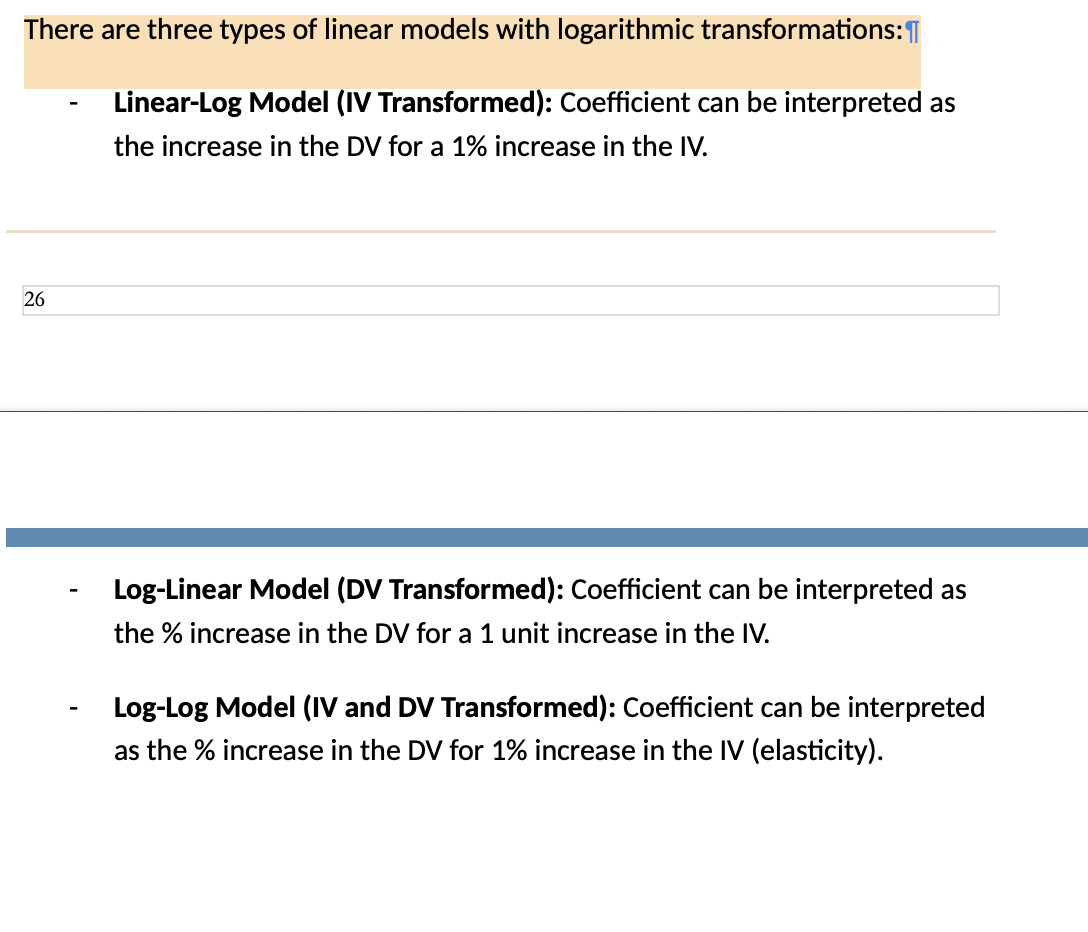Linear regression 1
1/10
There's no tags or description
Looks like no tags are added yet.
Name | Mastery | Learn | Test | Matching | Spaced |
|---|
No study sessions yet.
11 Terms
Measurement scale

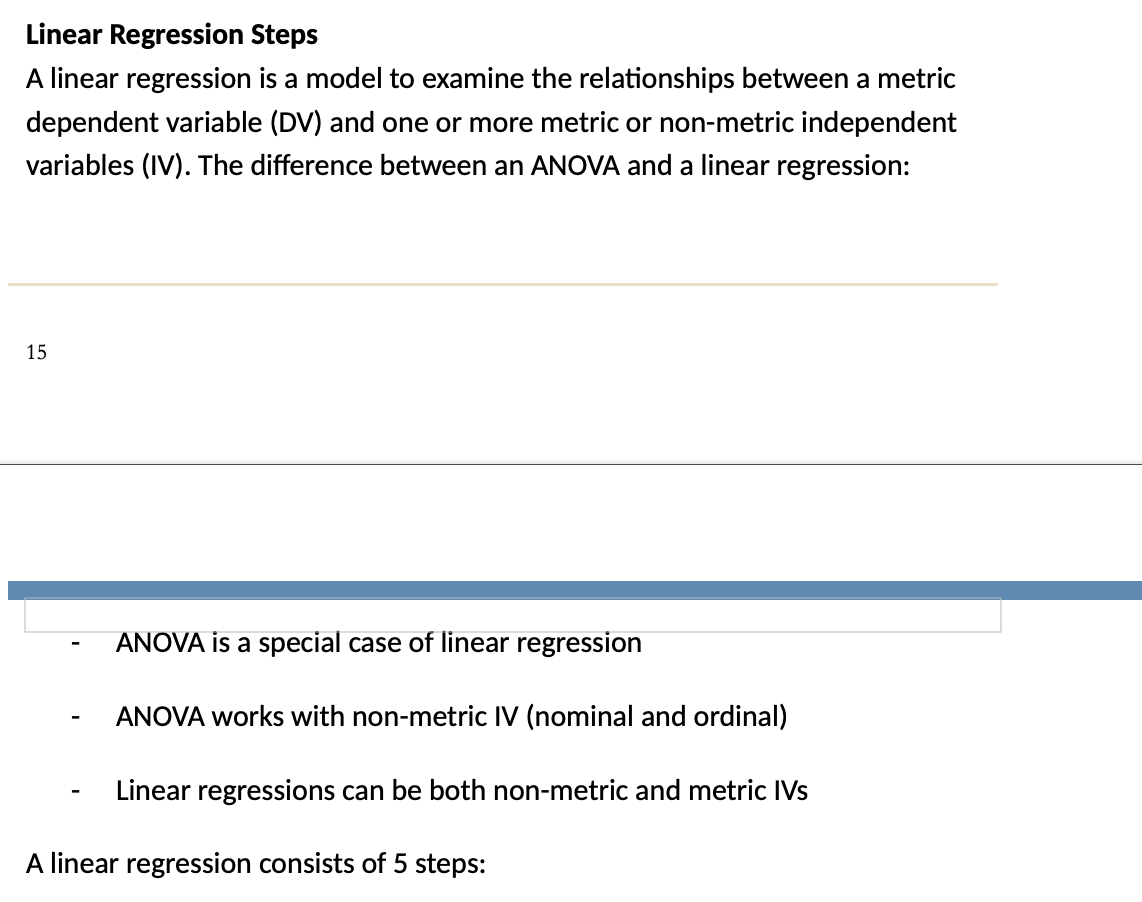
Defining the Objectives:
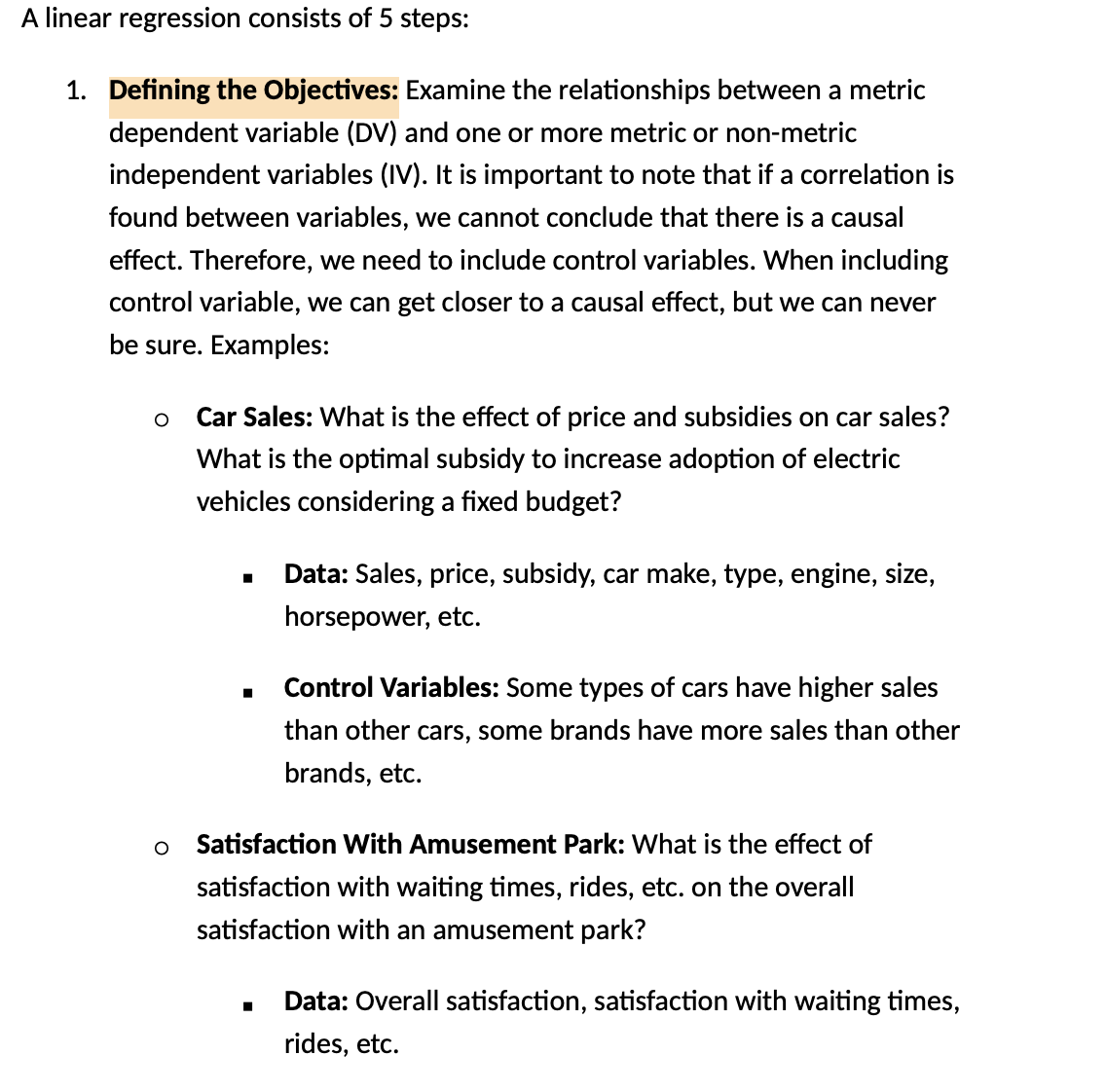
Designing the Linear Regression:
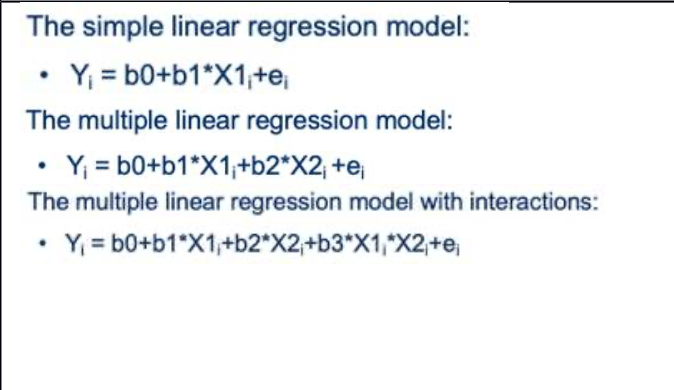
3.Assumptions
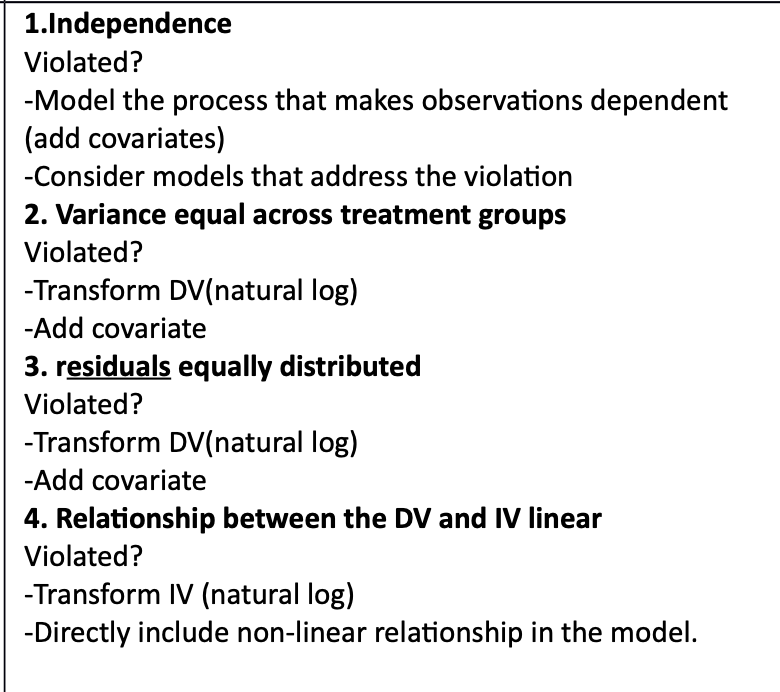
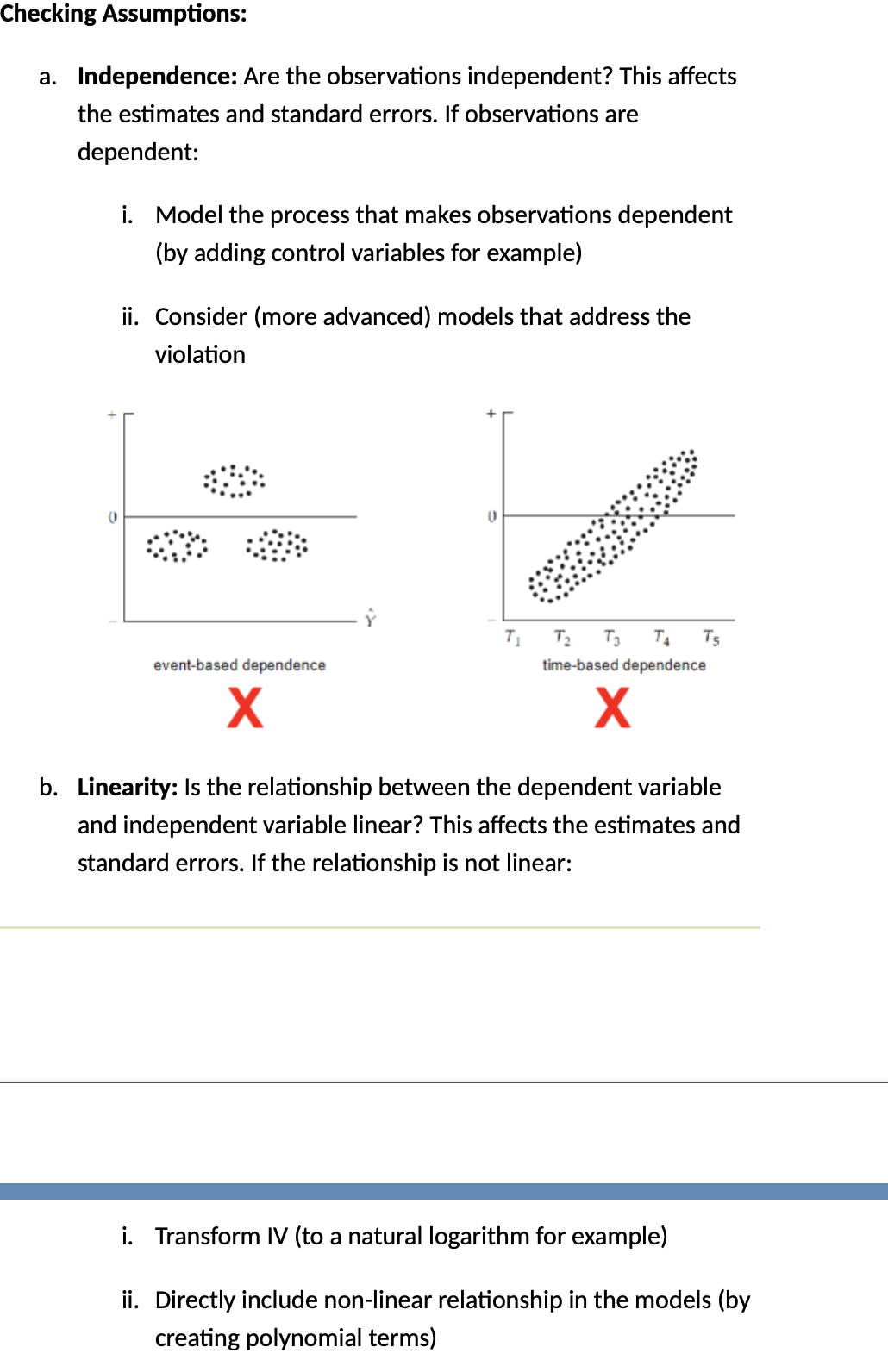
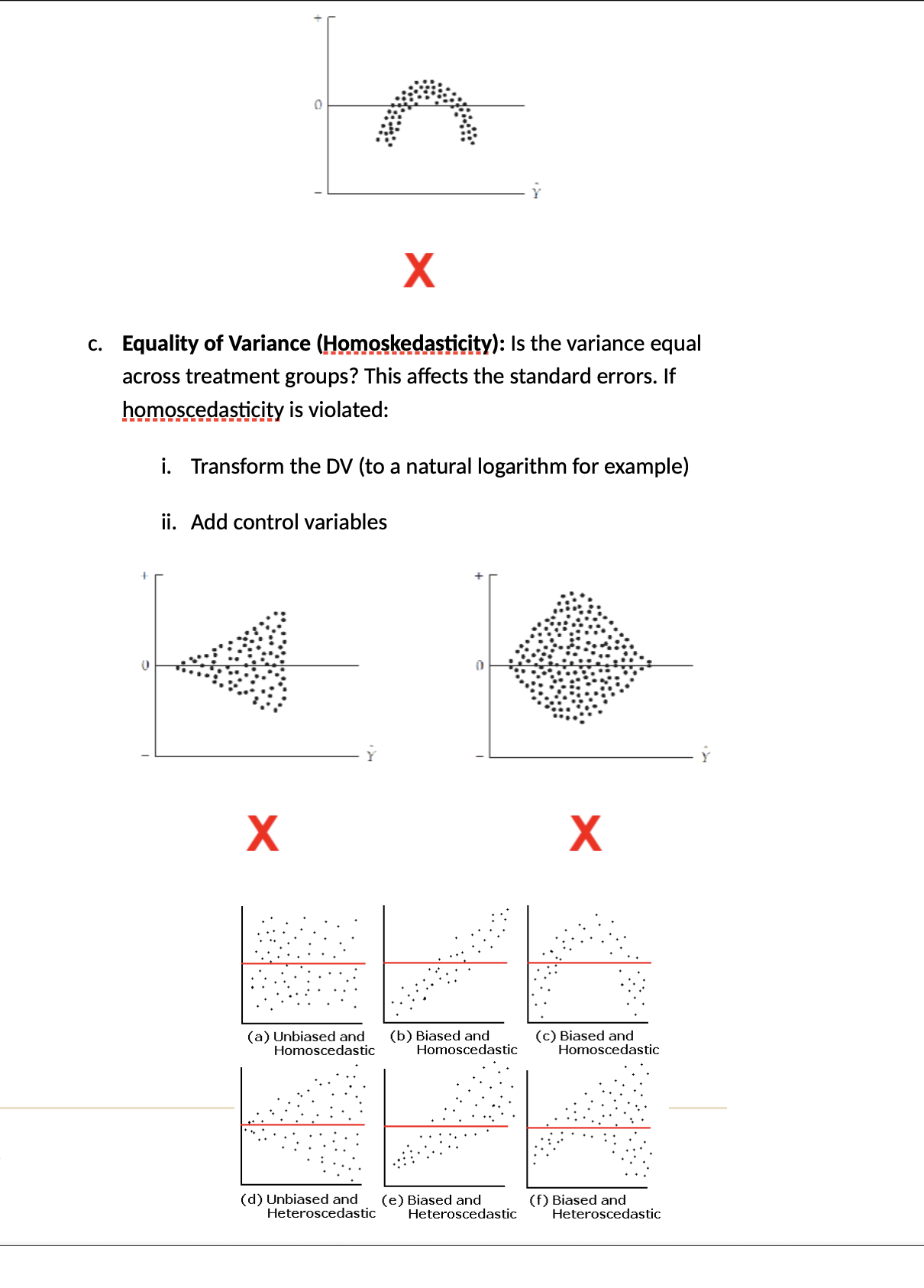
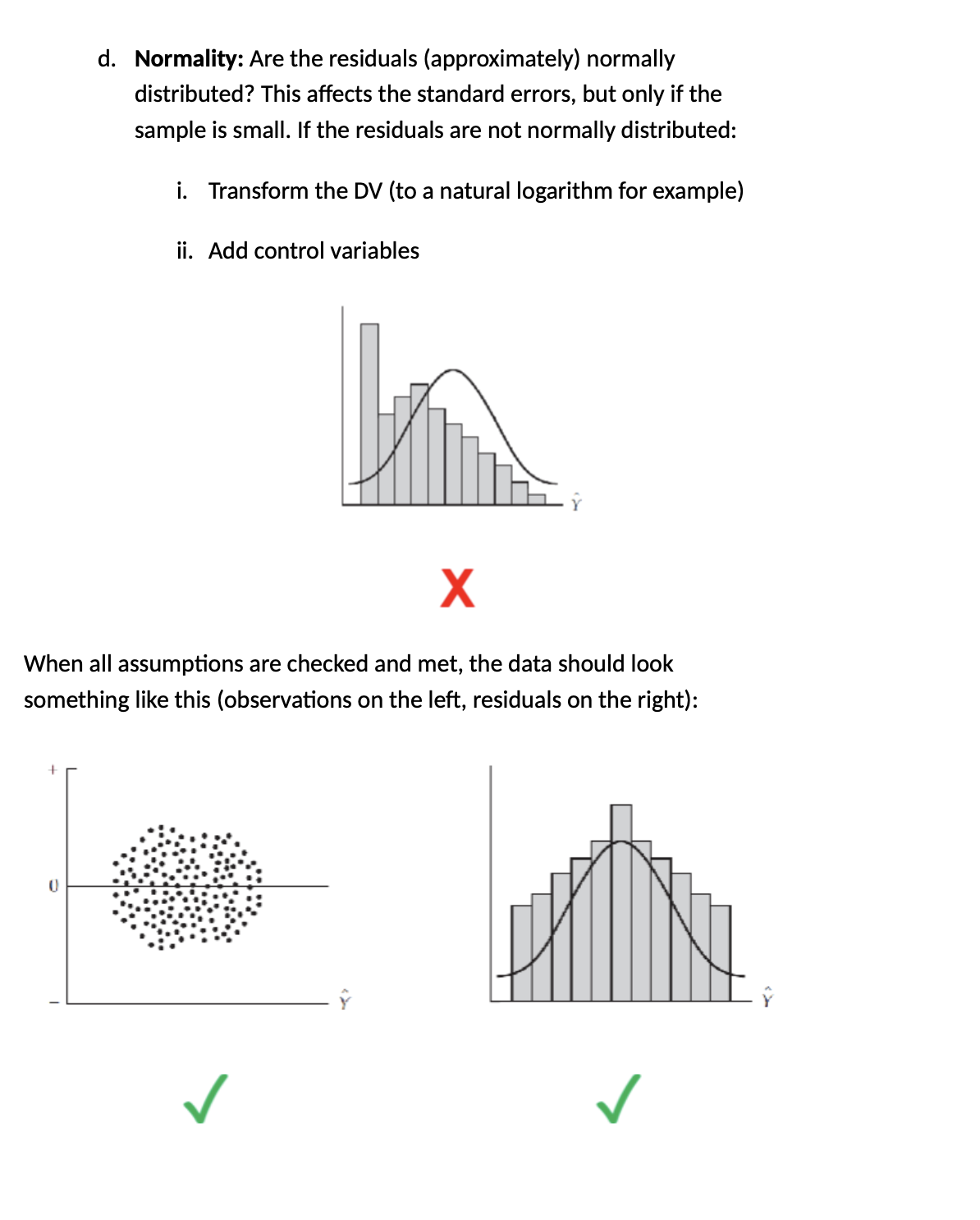
Special cases
ANOVA is a special case of linear regression.
4. Estimating
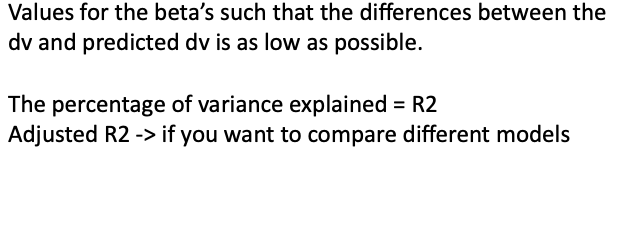

Your model guesses sales using a line:
Ŷ = b₀ + b₁X
OLS adjusts b₀ (intercept) and b₁ (slope) until the squared differences between actual sales and predicted sales are minimized.
That’s how it finds the “best fit.”
Model Fit
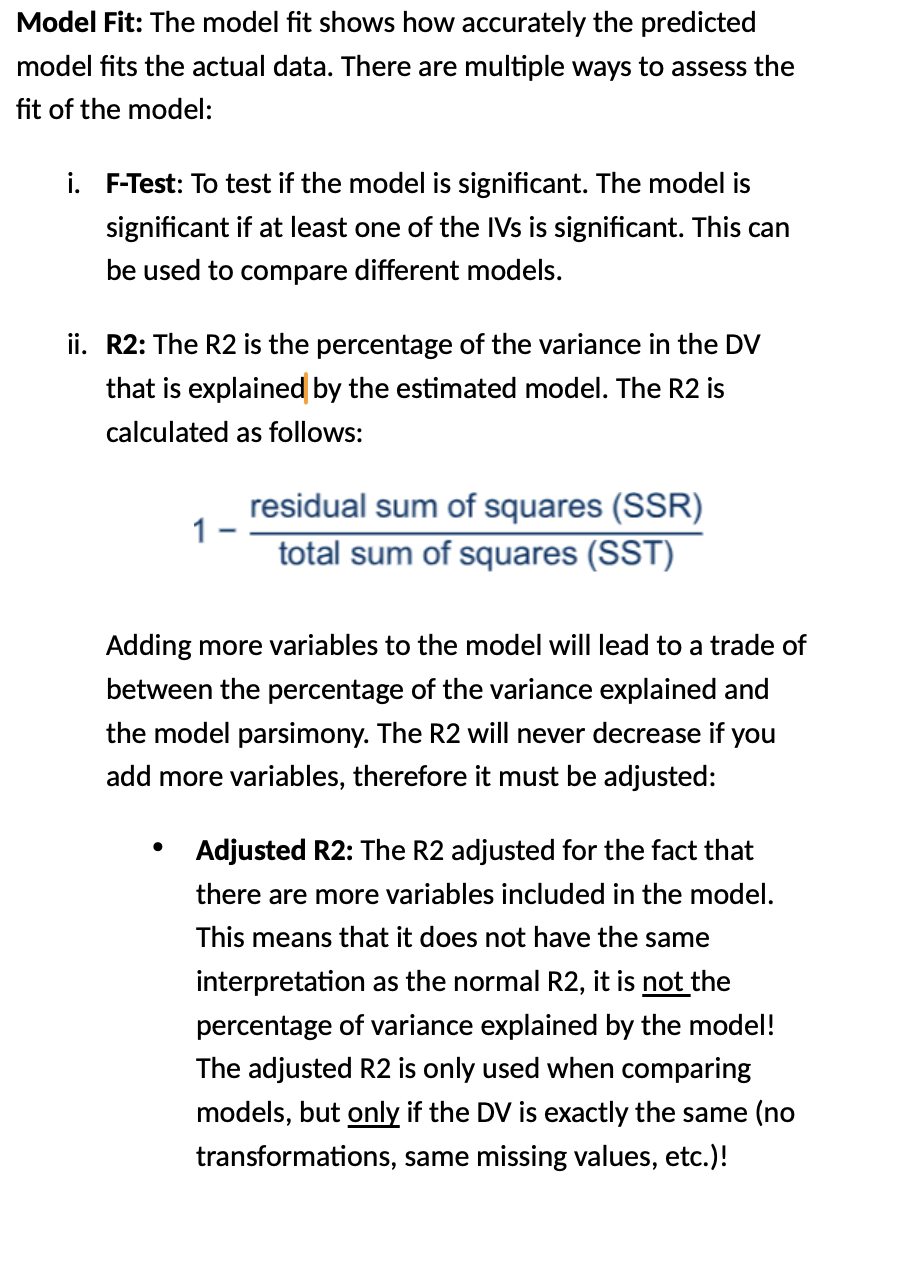
Interpreting the Results
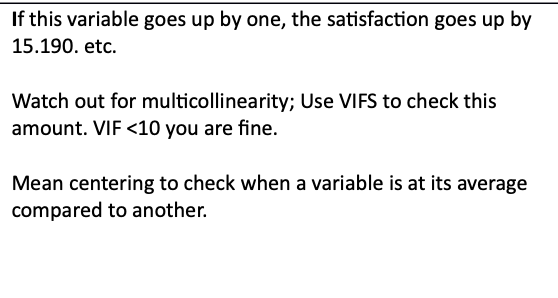
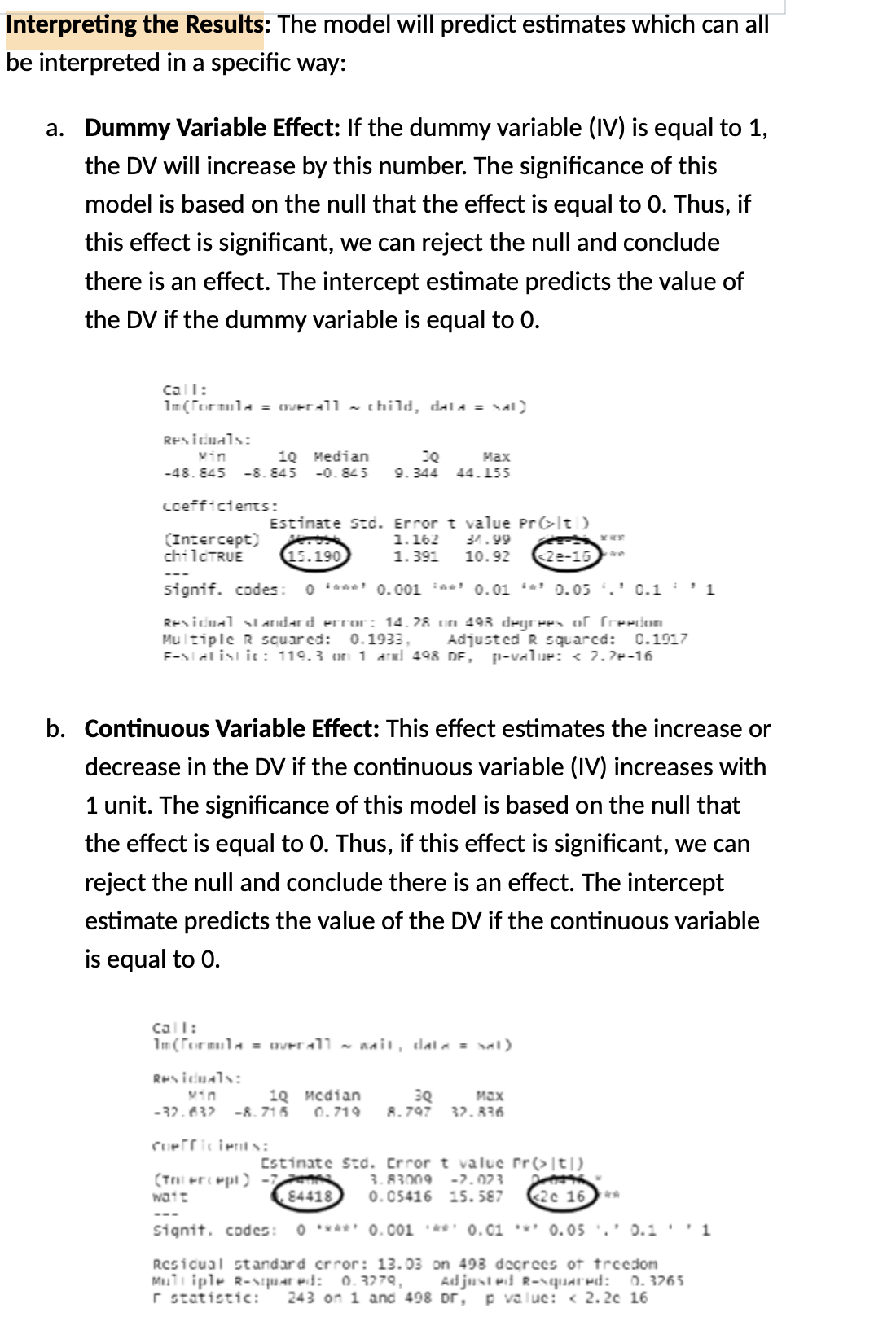
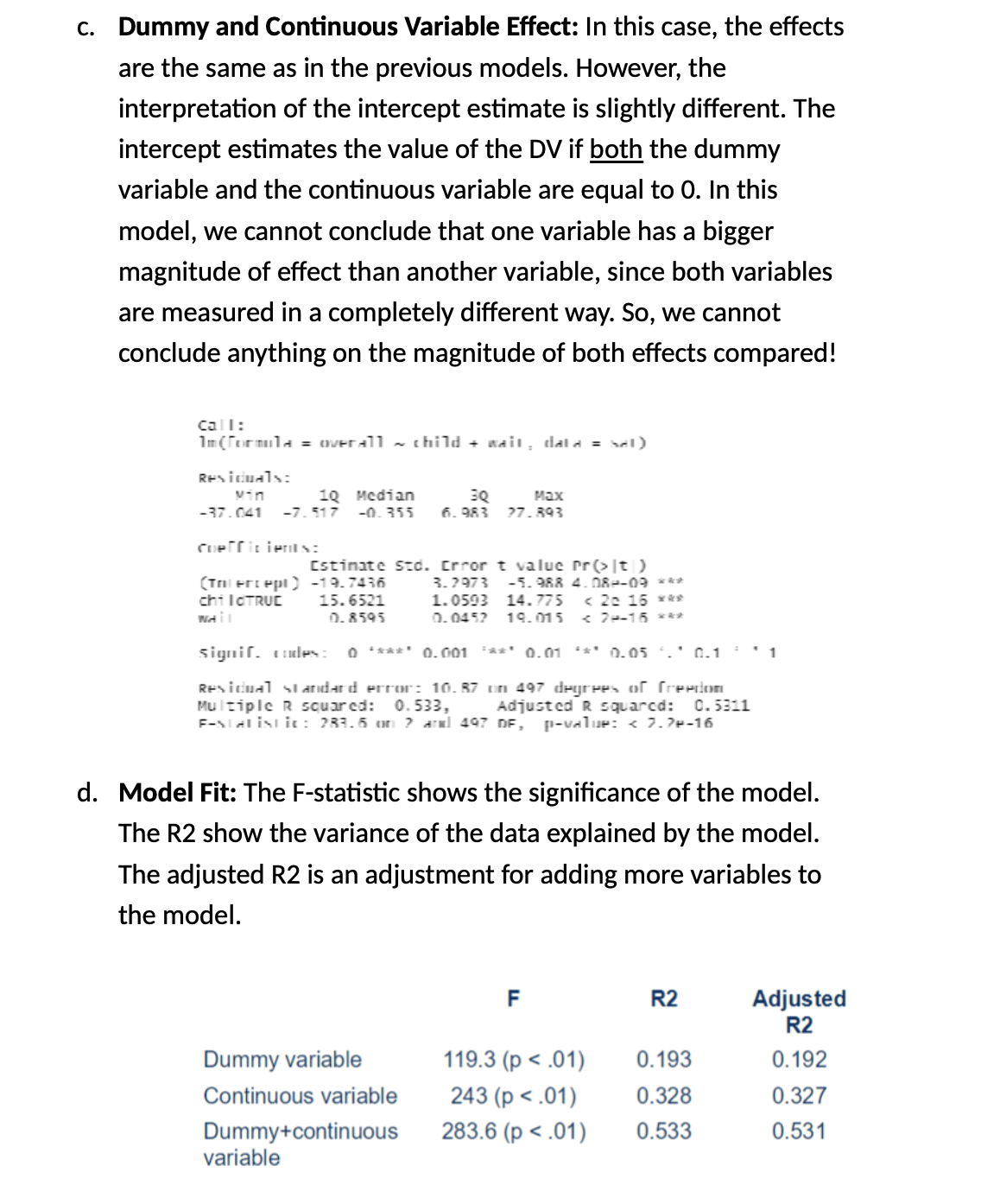
Breaking (The F table ) Down Each Column:1. F-statistic: "Is the model better than nothing?"
Tests: Whether the model as a whole is significantly better than just using the mean
All models are significant (p < .01) → All are better than random guessing
The combined model has the highest F (283.6) → It's the most significantly better than nothing
2. R²: "How much variance does the model explain?"
Dummy only: 19.3% of satisfaction variance explained by child status
Continuous only: 32.8% of variance explained by wait time
Combined: 53.3% of variance explained by both together
Shows clear improvement with more variables
3. Adjusted R²: "Is the improvement worth the complexity?"
Notice the pattern: Adjusted R² is slightly lower than R² in each case
The penalty is tiny because we only added one extra variable
Key insight: The combined model's adjusted R² (0.531) is still much higher than either single model → Adding wait time was definitely worth it!
6. Validating outcomes

Multicollinearity
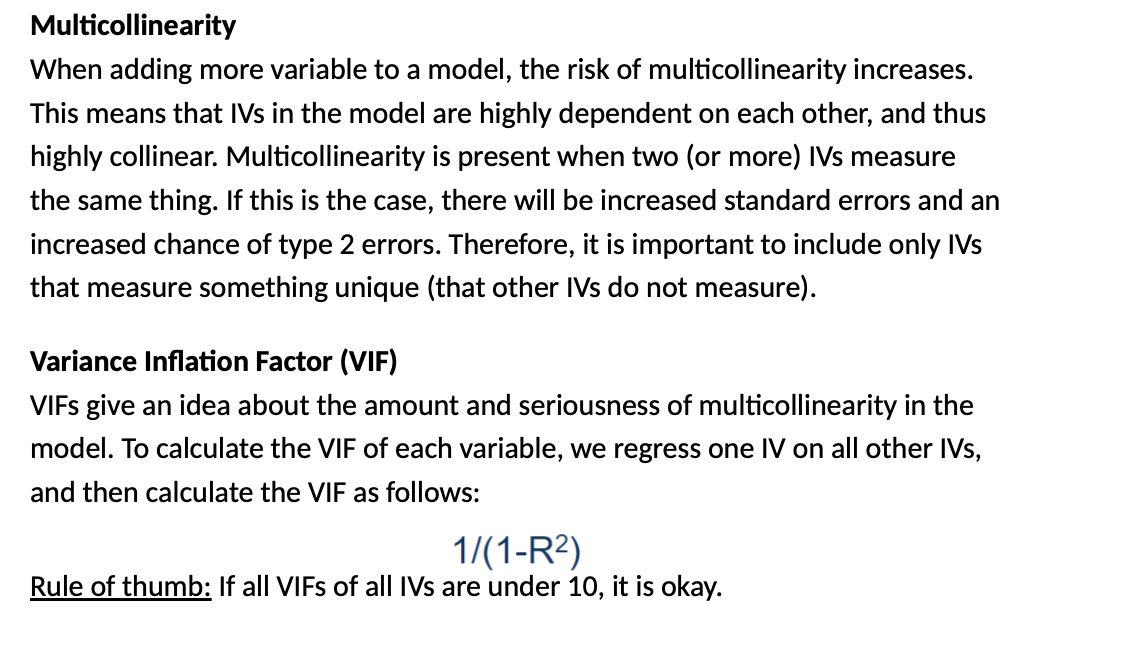
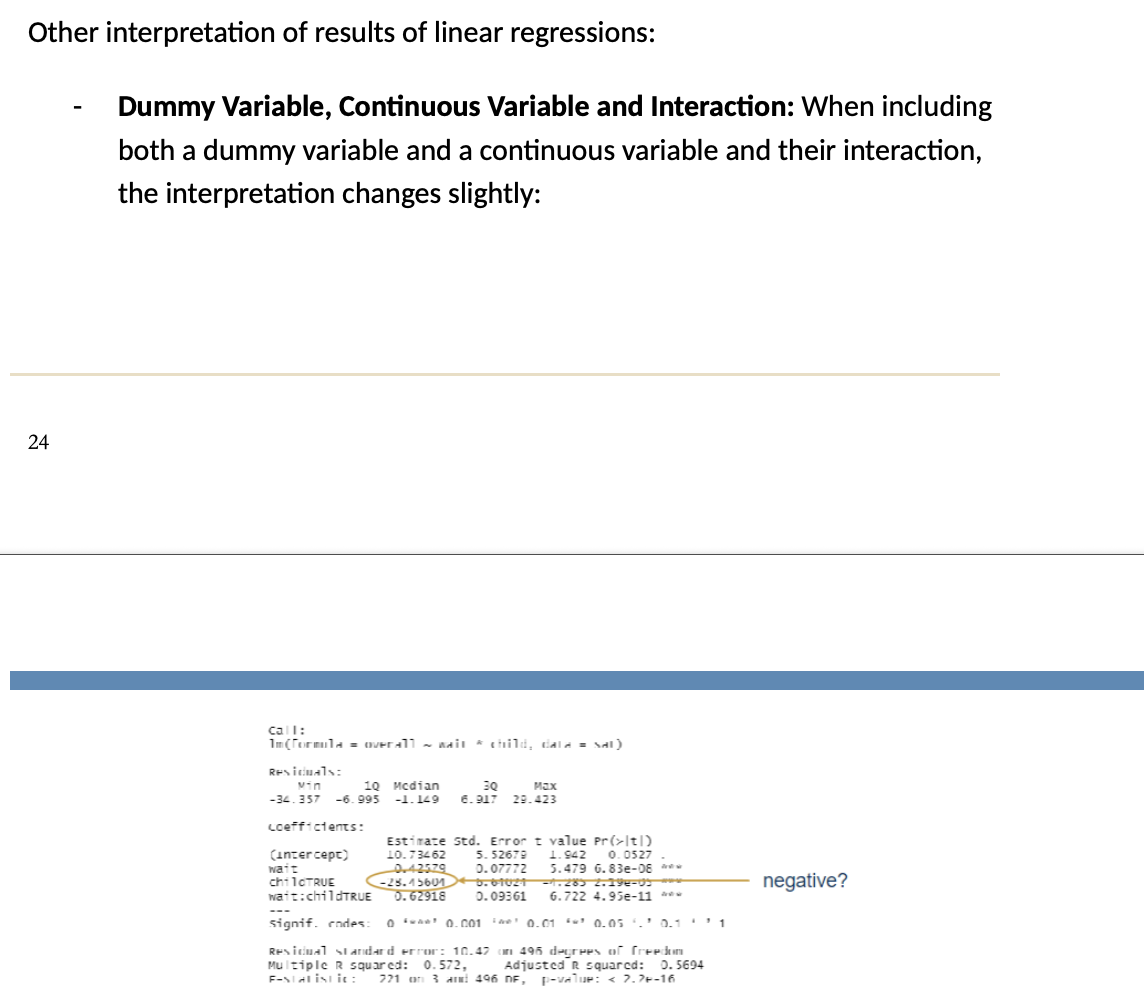
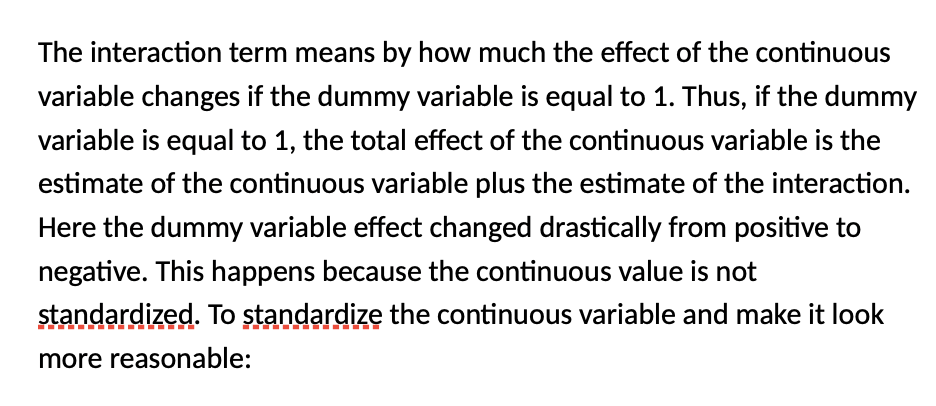
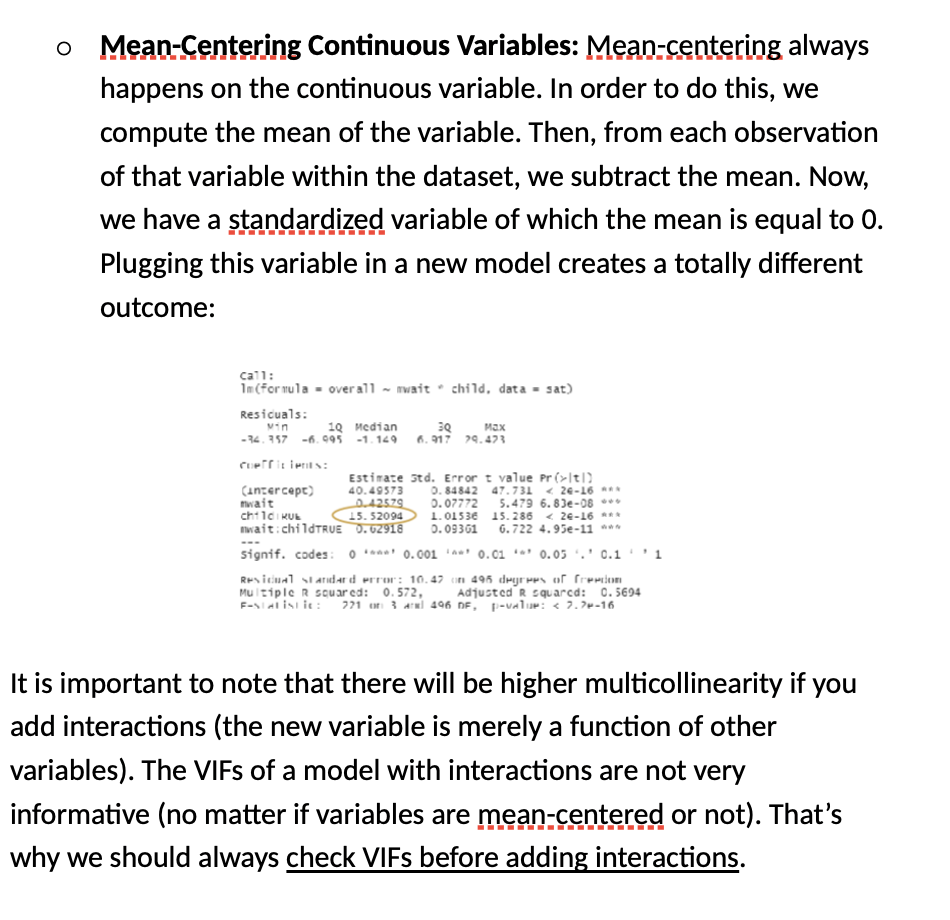
There are three types of linear models with logarithmic transformations:
